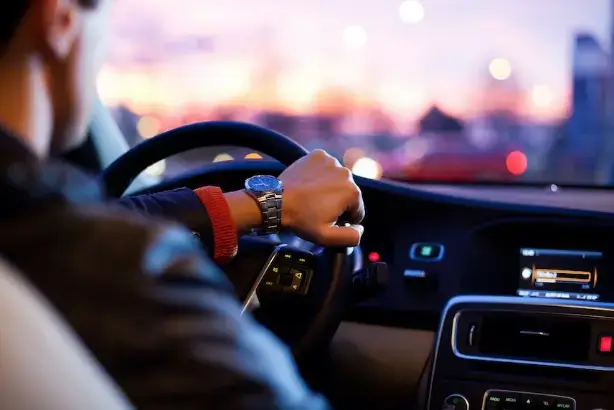8 Essential Tips for Handling Car Accidents at Night

Car accidents are distressing and can occur at any time, but the risks are amplified when they happen at night. Reduced visibility and potential confusion can make the situation even more challenging to manage. However, by being prepared and knowing the right steps to take, you can ensure your safety and protect yourself legally. So here are the essential tips for handling car accidents at night, enabling you to navigate these unfortunate situations with confidence and caution.
1. Seeking Legal Guidance
In more severe accidents or instances where the fault is disputed, seeking legal guidance may be beneficial. Consulting with an experienced attorney can help you understand your rights, responsibilities, and the legal options available to you. A reliable car accident lawyer can guide you through the process of dealing with insurance companies, negotiating settlements, or pursuing legal action if needed. Your lawyer can also provide valuable advice and represent your interests, ensuring you receive the compensation you deserve and protecting your rights in the aftermath of a car accident at night.
2. Ensuring Personal Safety
After a car accident at night, your safety should be the top priority. Once you’ve pulled over to a safe location, remain inside your vehicle with your seatbelt fastened until help arrives. If it’s necessary to exit the vehicle due to an immediate danger, such as fire or a hazardous situation, do so carefully and move to a safe area away from traffic. Use caution when walking on or near the road, especially at night, and be aware of your surroundings to avoid further accidents. Immediately after an accident, it’s crucial to remain calm and composed. Take a deep breath and assess the situation. Determine if you or any other passengers in your vehicle require immediate medical attention. Check if there are any hazards, such as leaking fuel or damaged electrical wires, that could pose a threat to your safety.
3. Calling for Professional Help
Contacting emergency services promptly is crucial after a car accident at night. Inform the dispatcher about the accident, provide your exact location, and describe any injuries or hazards involved. It’s recommended to stay on the line until the dispatcher has all the necessary information and has assured you that help is on the way. The police will document the accident scene and gather witness statements, which can be valuable for insurance purposes and legal proceedings.
4. Dealing with Limited Visibility
Nighttime accidents present unique challenges due to reduced visibility. It’s essential to adapt to these conditions appropriately. Use your headlights effectively by switching on both low and high beams when necessary. Avoid looking directly at oncoming headlights, as this can impair your vision. Pay extra attention to your surroundings, including road signs, traffic signals, and other vehicles. If you have a reflective vest or clothing, put it on to enhance your visibility to other drivers and emergency responders. To improve visibility and alert oncoming traffic, use a flashlight or flares to mark the accident scene. This will help prevent additional collisions and ensure the safety of everyone involved.
5. Exercising Caution during Interactions
When interacting with the other party involved in the accident, be courteous and polite. Avoid engaging in heated arguments or confrontations. Stick to exchanging necessary information and refrain from discussing the details of the accident beyond the facts. This approach helps maintain a calm and cooperative atmosphere, reducing the potential for additional stress or conflict. It’s important to avoid discussing fault or accepting blame for the accident, especially in a stressful situation. Leave the determination of fault to the authorities and your insurance companies. Stick to providing factual information when talking to the police and insurance representatives.
6. Seek Medical Attention
Even if you don’t believe you’ve been seriously injured, it’s wise to seek medical attention after a car accident. Some injuries, such as whiplash, may not be immediately apparent. A medical examination can ensure that any hidden injuries are identified and treated promptly. Furthermore, medical records can provide essential evidence if you need to file an insurance claim. Of course, you’ll also need to contact your insurance company as soon as possible to report the accident. Provide them with all the relevant details, including the information you collected from the other party involved. This will initiate the claims process and ensure that you receive the necessary assistance and guidance.
7. Contact Emergency Services
Whether the accident is major or minor, it’s essential to contact the appropriate emergency services immediately. Dial the emergency hotline in your region and provide them with your exact location and a detailed description of the accident. The authorities will dispatch the necessary personnel, including police officers and paramedics, to the scene. Once you have contacted emergency services and provided them with the necessary information, it’s important to remain on the line and follow any instructions they provide. The dispatcher may ask you additional questions or provide guidance on how to ensure your safety while waiting for help to arrive. It’s crucial to stay patient and cooperative throughout the conversation, as the information you provide will help emergency responders assess the situation accurately and respond accordingly.
8. Gather Evidence and Exchange Information
While waiting for the authorities to arrive, collect as much evidence as possible. Use your smartphone to take photos of the accident scene, including damage to both vehicles and any visible injuries. Additionally, gather important information from the other party involved, such as their name, contact details, insurance information, and vehicle registration number. This information will be crucial for insurance claims and legal proceedings. While gathering evidence, it is essential to be mindful of your surroundings and not tamper with any evidence, especially on your car, that may be crucial to determining fault. Focus on capturing clear and comprehensive photos from different angles, as well as taking notes about the accident, such as the time, date, weather conditions, and any relevant details about the road or traffic.

Handling car accidents at night requires a combination of preparedness, quick thinking, and caution. By staying calm, prioritizing safety, contacting emergency services promptly, and gathering accurate information, you can navigate these situations effectively. Additionally, adapting to limited visibility, exercising caution during interactions, and seeking legal guidance when necessary can help protect your rights and facilitate a smoother recovery process. Remember, being informed and proactive are key to managing car accidents at night with confidence and ensuring the best possible outcomes for all parties involved.
